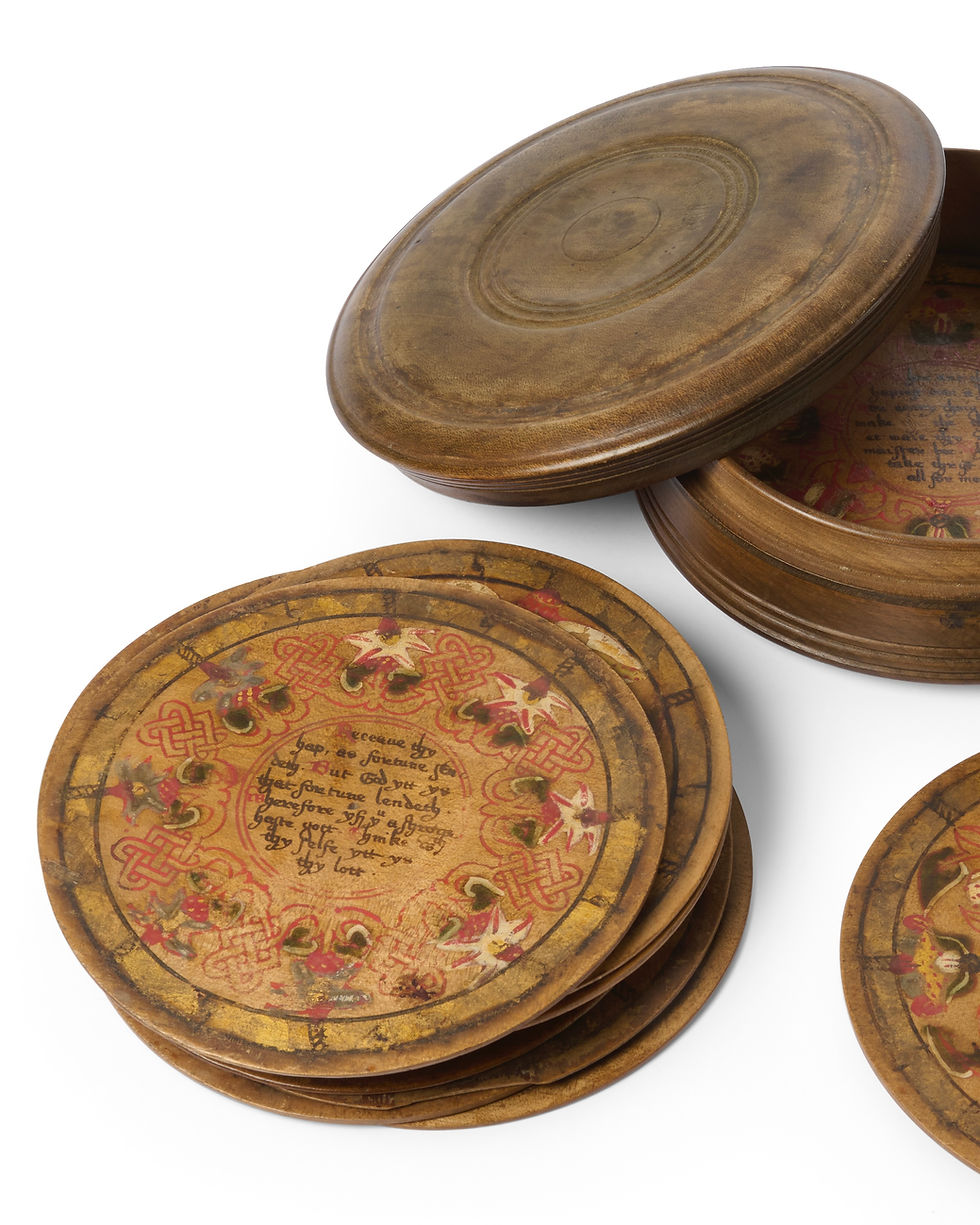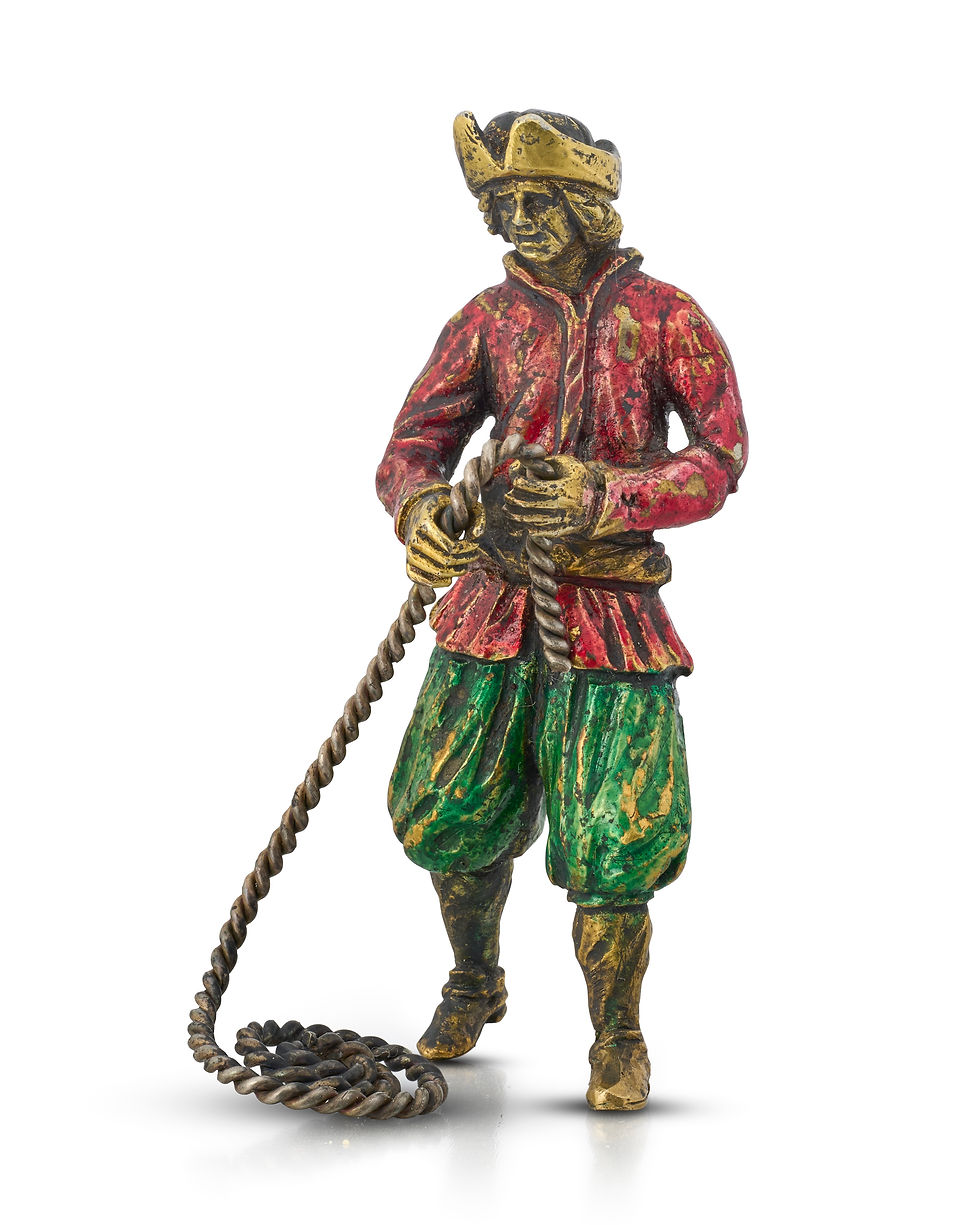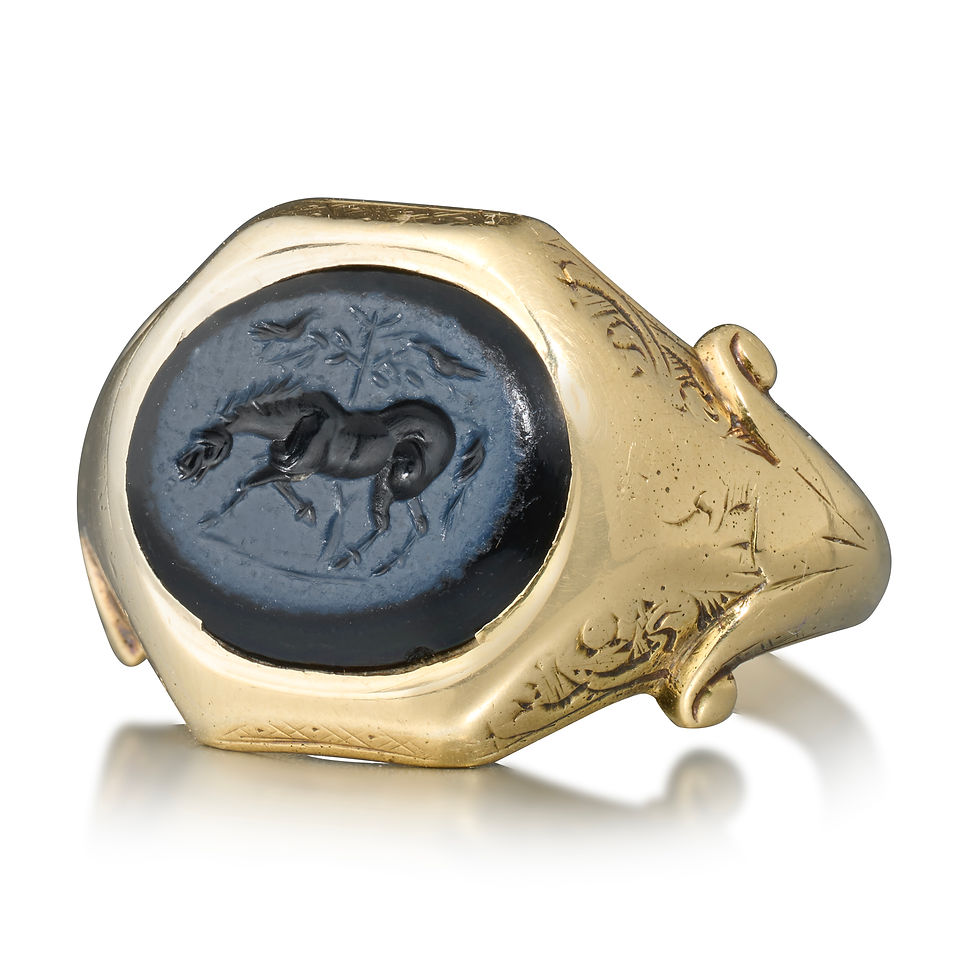A high carat gold and garnet set annular brooch.
French or English, 13th - 14th century.
Measures 3.8 x 3.2 x 0.76cm.
Weighs 8.8 grams.
Provenance: Private English Collection, formed between the late 1970’s - early 1990’s.
The brooch is engraved with inscriptions on both sides,
The front: VIVAMTINVNOANI
Both inscriptions can be interpreted differently according to the order of their reading; The front can be read ‘IN JUNO ANI VIVAM TI’, which roughly translates as ‘May I live for you in the fastening’, alternatively ‘VIVAM[vs] IN VNO ANI[mo]’ which roughly translates as ‘Let us live as one soul’.
The back: AMORIVNTVANVNTVI
The reverse reads ‘JUNTUAN UN TUI AMOR’, which roughly translates as ‘Join together with your love’, alternatively ‘AMOR[is] IVN[c]T[i] ANVNTIV[s]’ which roughly translates as ‘A message of joint love’.
The brooch is adorned with six cabochon garnets, two large and four smaller, each set in pie dish settings. The outer edges of the brooch are engraved with beaded decoration between the gems, the reverse of the gems are engraved with panels of stylised palm leaves.
A similar, smaller ring brooch can be found in the collection of the Metropolitan Museum of Art, New York, Accession Number: 2018.355.
https://www.metmuseum.org/art/collection/search/773198
A comparisons can be made with two examples in the collection of the British Museum, Registration Numbers: 1849,0301.32 and AF.2683.
https://www.britishmuseum.org/collection/object/H_1849-0301-32
https://www.britishmuseum.org/collection/object/H_AF-2683
The inscriptions on the brooch serve as metaphors, linking its function of fastening materials to the binding of lovers in medieval romance. Gift-giving was central to courtly love, and the brooch symbolised both affection and protection, reminding the wearer of the giver’s love while also warding off unwanted advances.
During the Middle Ages, gemstones were often associated magical and protective properties that they were believed to possess. Gemstones could protect against evil or poisons as well as heightening the individuals’ characteristics and strengths.
An annular brooch is a type of brooch that is circular in shape, forming a complete ring, they were worn by both men and women of all social classes. The word "annular" comes from the Latin word "annulus," meaning ring. These brooches were popular in medieval Europe, particularly from the 13th to 15th centuries, and were used to fasten clothing such as tunics and cloaks.
"Pie dish" is a historical term for a gemstone encased in an oval or shaped gold box, resembling a pie rising in a baking tin.
Shipping
Worldwide shipping is included in all prices.
Matthew Holder does not accept any responsibility for import duty, this is to be paid by the buyer.
Shipping will usually be made within 3 days of payment using a tracked and signed for service of Matthew Holder's choosing unless agreed otherwise.
Returns
We want you to be happy with your purchase, we therefore offer a 14 day money back guarantee.
In this case the item must be returned prior to any refund, in the condition in which it was sent.
We will not be responsible for any shipping costs incurred in the return of such items.
All sales are subject to our standard terms and conditions.


































